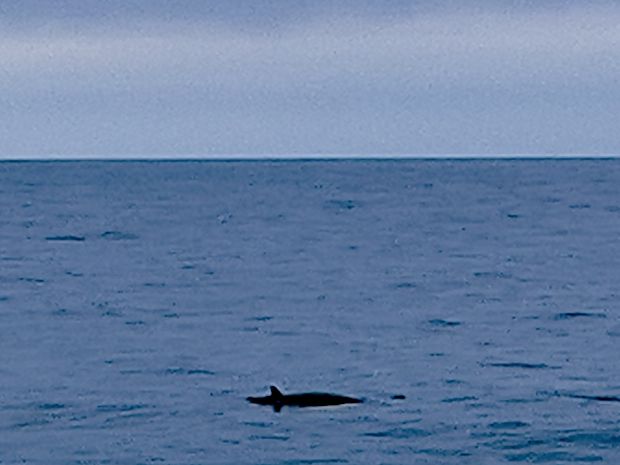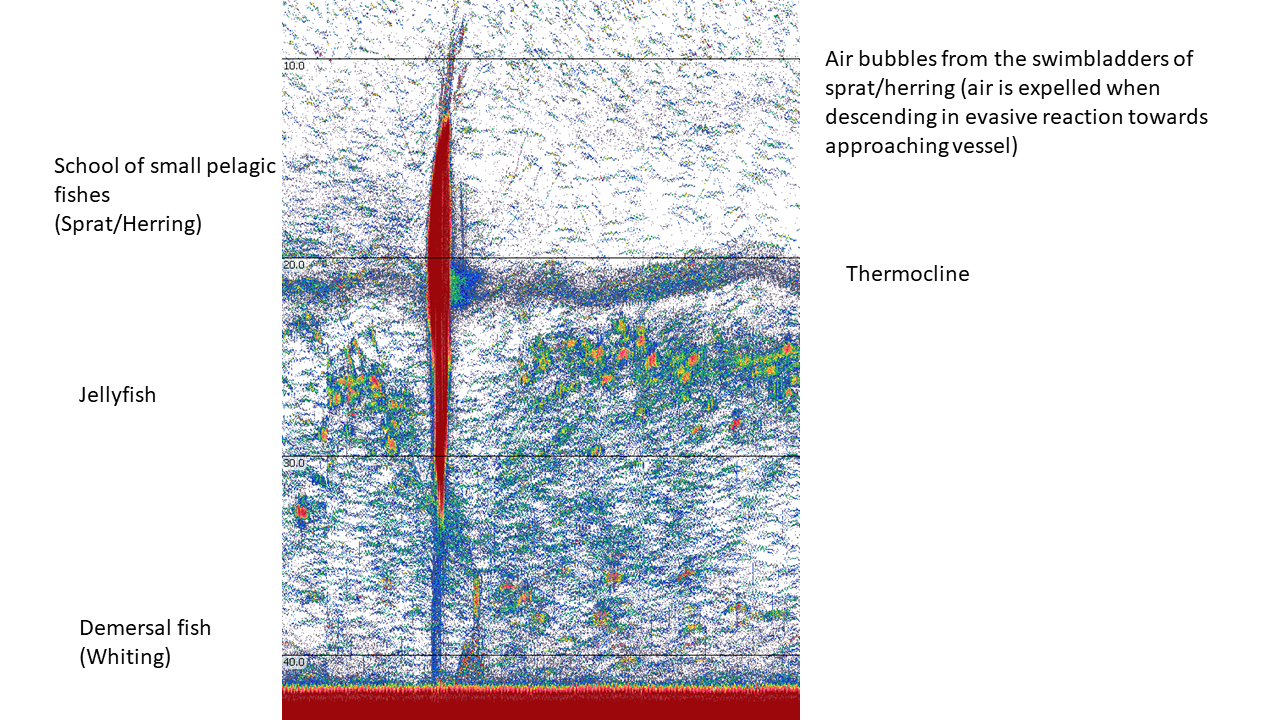"Hello everyone!
Our HERAS herring acoustic survey in the North Sea is coming to an end. Today we are working our way eastwards on the last transect and will then wrap up our investigations. This year, unfortunately, the weather threw a spanner in our field work and we lost a few days of survey time. In the end, however, we were able to complete the majority of our originally planned transects.”
This short update from cruise leader Matthias Schaber was sent yesterday from our research vessel 'Solea'.
After completing their daily research work, the scientists were able to observe a minke whale swimming close to 'Solea' for some time in almost calm conditions and smooth seas at 55°13 N, 004°32 E in the German Exclusive Economic Zone on the slope of the Dogger Bank.
Minke whales (Balaenoptera acutorostrata) are now an established species in German waters according to the latest Red List (2020) and the complete list of mammals (Mammalia) in Germany. Previously, this rorqual species (= belonging to the marine mammal family Balaenopteridae) was only listed as an occasional guest. However, due to the proven regular use of the 'reference area' (Red List Germany), e.g. for foraging, the species now meets the classification criteria for 'established'.
“Although the sighting is anything but a sensation, as we have seen them from time to time during these HERAS expeditions in recent years - and especially in this area - it is still an extraordinary experience”, our colleague Matthias Schaber comments.
“The abundance of food in the Dogger Bank area is assumed to be a seasonal attraction. Even if we can't prove this with a single sighting, there were some very large schools of small pelagic fish (sprat, herring) in the area at the time (which we recorded with the echosounder) - these are important prey for minke whales. It is therefore quite possible that the minke whale - like our team on the ‘Solea’ - was looking for sprat and herring and found them in the area east of Dogger Bank.”

![[Translate to English:] [Translate to English:]](/media/_processed_/7/1/csm_IMG_7977_large_1defaf5de1.jpg)








